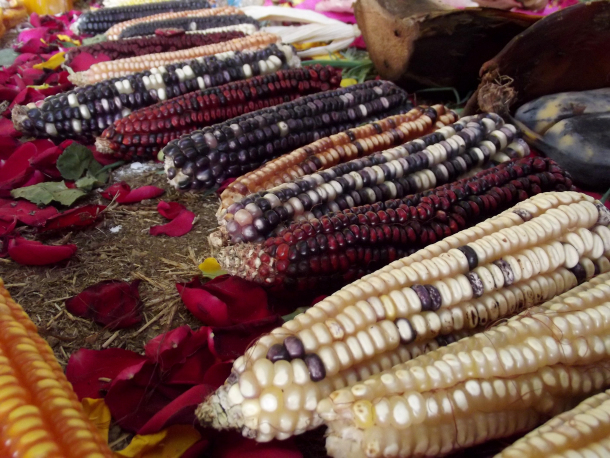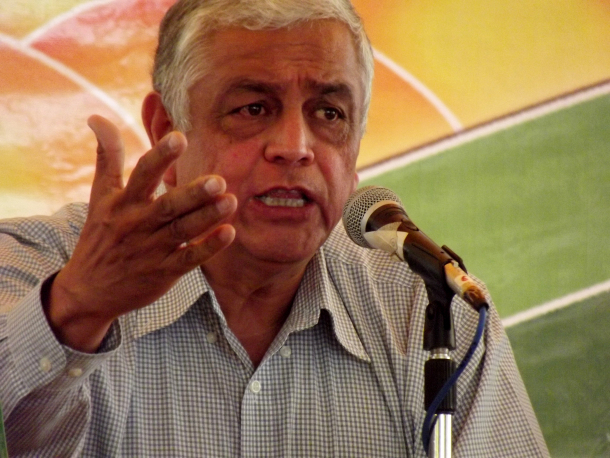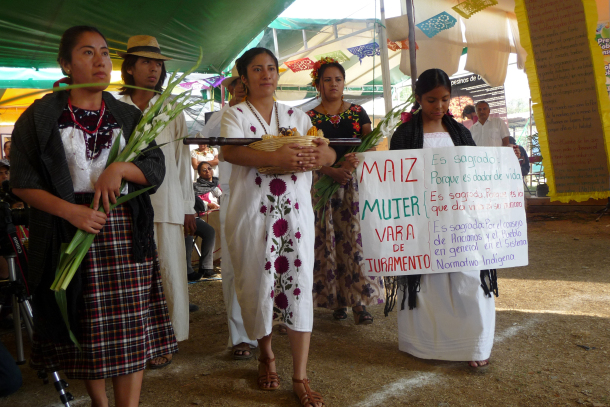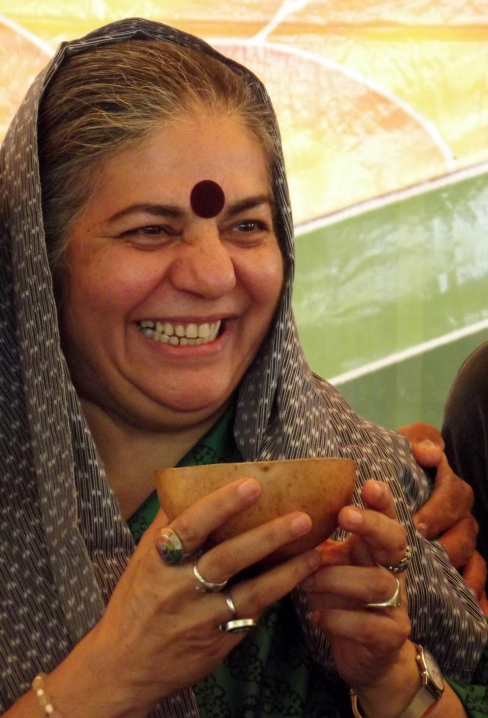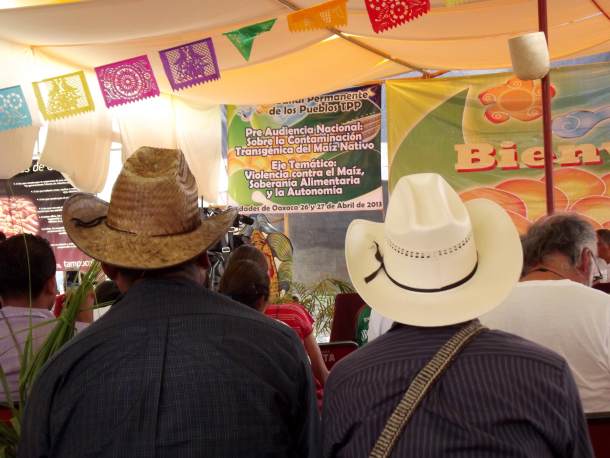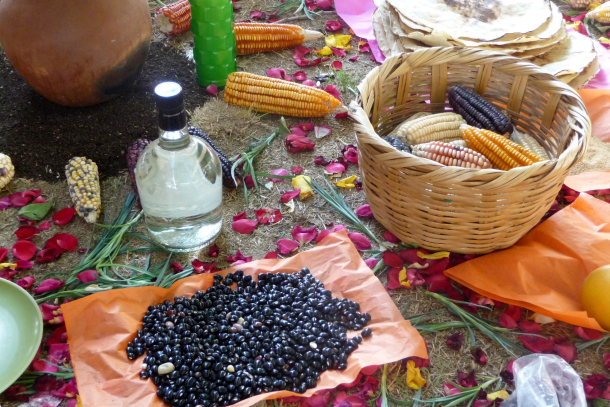
FROM MEXICO TO INDIA: MONSANTO IS KILLING MORE THAN JUST BIODIVERSITY
Jen Wilton and Liam Barrington-Bush
In late April, world renowned Indian ‘seed activist’ Vandana Shiva travelled to the southern Mexican state of Oaxaca to join a gathering of Mexican farmers, indigenous leaders and environmentalists, fighting to protect Mexico’s native corn crops against the imposition of genetically modified alternatives.
The group gathered for the ‘Pre-audiencia Nacional: Contaminación Transgénica del Maíz Nativo‘ in the shadows of the Sierra Juárez mountain range, in response to the Mexican government’s proposal to allow the seeding of twelve million hectares of genetically modified corn. The proposal followed an initial pilot project in which Monsanto was allowed to plant GMO corn in test sites in 2009. While many local communities remain adamantly opposed to the move, extensive lobbying by Monsanto, with support from the world’s richest man, Mexican Carlos Slim, and considerable efforts by the Gates Foundation, have raised real fears that local concerns may be ignored.
While Slim, the Gates Foundation and Monsanto argue that GMO technology will feed the world’s poor, many locals deem the imposition of transgenic crops a serious threat to the native varieties of corn that have been at the core of rural Mexican cultures for millennia.
“On every ground transgenics are wrong,” Vandana Shiva told the Oaxaca audience of several hundred, “but they are hugely wrong in the centre of diversity of maize here in Mexico.”
The historic birthplace of corn, and home to several thousand varieties of the crop, corn is more than just a staple in the Mexican diet. Renowned Mexican poet Octavio Paz once said, “The invention of corn by Mexicans is comparable only to the invention of fire by man.”
Beyond its prevalence in local cooking, corn is a symbol at the heart of countless indigenous traditions and holds great spiritual significance. An indigenous Nahuatl man from the state of Hidalgo explained that his community hosts a festival to celebrate corn every year in which “we dance with the corn and we celebrate the Earth Mother.”
Echoing this sentiment, a woman from an organisation representing indigenous communities in the south-east of Mexico and Guatemala said, “When we care for and cultivate our cornfields, God is with us. He gives us the food that we need. He works with us and he rests with us. That is why we ask for permission from God in every moment of the life cycle of corn … The corn that God gives us, lives with us, sings and dances with us, and in certain moments it also cries with us.”
A nationwide campaign was born in Mexico in 2007 called ‘Sin Maíz, no hay país’ (’Without corn, there is no country’). “Corn is the life of the towns,” said event organiser Neftalí Reyes Mendez, of the Oaxacan Collective in Defence of Territories in an interview following the event. “Corn is the base of life, the base of resistance for the peoples of Oaxaca.”
Aware of the crop’s supreme importance in Mexico, Vandana Shiva travelled more than 30 hours to share her experiences of fighting GM-giant Monsanto in India. “We started the seed saving movement in India,” she explained, “with the commitment to not obey laws that make it illegal for us to have our own seeds, because [seed] saving for biodiversity, continuing our heritage, receiving what we have received from nature and our ancestors, looking after it with love and care to pass it on to future generations is not a crime. It is our sacred duty.”
Shiva went on to explain the catastrophic effects that the widespread planting of BT cotton in India has had, relating how within one season only Monsanto seed was available to cotton farmers. Subsequent crop failures and the rise of indebtedness, following an 8,000-fold increase in seed prices, have devastated the fabric of community life. Shiva poignantly told the gathered crowd, “150,000 people have been killed in the criminal violence of organised crime in Mexico. In India, 270,000 Indian peasants have committed suicide because of the criminal violence of the organised crime of Monsanto. … Don’t allow Monsanto to make Mexico a suicide economy.”
With what critics have called ‘The Monsanto Protection Act’ having recently passed into law in the US, some Mexicans fear Peña Nieto’s government will follow suit and approve the widespread commercial planting of GM corn, making seed sharing illegal and making it far harder for farmers to maintain non-GMO-contaminated varieties of corn. Dr Alejandro Espinosa Calderón, a nationally-recognised expert on GMO corn in Mexico, echoed this fear, stating emphatically, “The Mexican government does not defend Mexicans, they defend Monsanto.”
While Monsanto have not yet proven the safety of their pilot sites in Mexico, GM advocates argue that scientific tests show no harmful health or environmental results. But Shiva has heard these arguments before. “All the tests they do for safety are not tests, because they work with surrogate proteins. They don’t work with the transgene,” Shiva explained. Her concern is backed up by a 2006 report by Friends of the Earth UK, on the allergenic qualities of GMO foods. The report argues “surrogate proteins may not reflect the toxicity or allergenicity of the plant-produced protein to which people are actually exposed. … The use of surrogate proteins is not acceptable – protein produced by the GM plant that will actually be eaten must be used in allergenicity assessments.”
Similarly, a 2009 report from the Indian Academy of Sciences recommends “carrying out acute toxicity studies with native (not “surrogate”) protein.”
“When it comes to safety,” Shiva explains incredulously, “they say this is natural. It is substantially equivalent to your corn and therefore we don’t have to really test because it is equal. … They say it is just like nature, but when it comes to owning the seed they say, ‘We are the creators. We made it, we are the inventers. We own it, we have the patent. It is our intellectual property.’ So the same thing is new, when it comes to owning, and it is natural when it comes to shedding responsibility for the environmental, health and socio-economic impacts. I call this ontological schizophrenia.”
Shiva concluded by reiterating the connection between Indian and Mexican seed activists, despite their geographical separation – “We are doing what you are doing and we are part of one movement that is planetary, while being deeply local. We have started a global citizen’s movement for seed freedom, to say no to transgenics, no to patents, no to Monsanto’s empire to destroy the planet, and our lives and our food systems.”

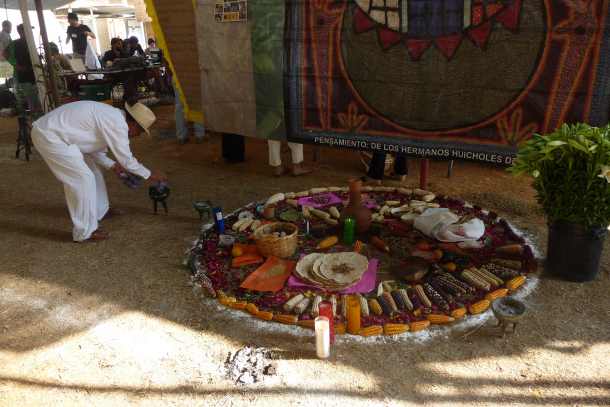
.jpg)
